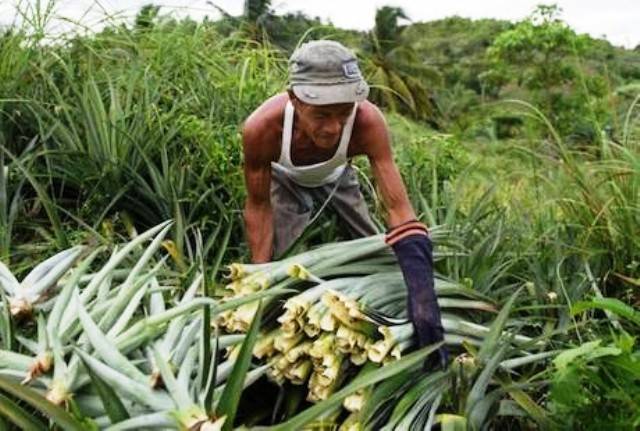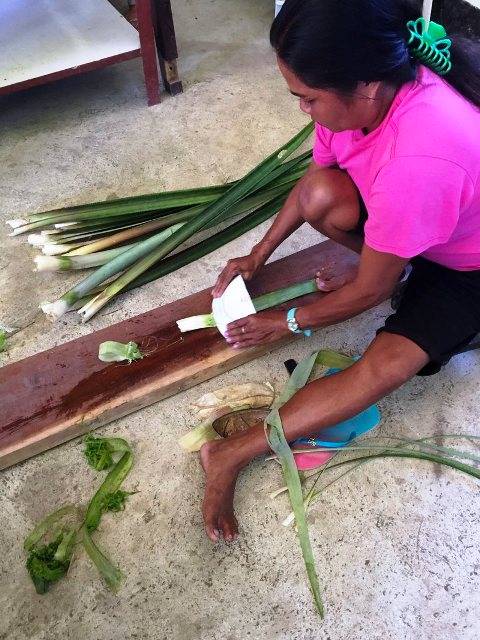
Pineapple in India is known as Ananas is a juicy, tangy and delicious sweet fruit. According to the APEDA, Pineapple is cultivated in an area of 9 thousand hectare and total production is 1,415.00 thousand tons. It is abundantly grown in almost entire North East Region, West Bengal, Kerala, Karnataka, Bihar, Goa and Maharashtra States. Whereas the world scenario is the major pineapple growing countries in the world are Brazil, Thailand, Philippines, Costa Rica, China and India. The total area under pineapple cultivation in the world is 909.4 thousand hectare with production around 19412.91 thousand tons.
Apart from eating the fruit the leaves which are waste is also useful which are now used for the clothing. The Spain has come out with the new fabric with the pineapple leaves.

Spain, had managed to stand out in the design, manufacture and export of leather products, she left everything behind. After 15 years in the sector, she devised a material made from the filament of pineapple leaves, allowing her to launch an environmentally-friendly and innovative product. "I respect the Earth and the people," says this Asturian woman based in London, where she manages Ananas Anam. The company has developed Piñatex, an alternative fabric to leather which has boosted the local economy of various impoverished communities in the Philippines, the third largest pineapple producer in the world. With a turnover of 275,000 pounds sterling (306,166 Euro), it is the only distributor and manufacturer of this material. Its head office is in London and employs 15 people. Last year, their losses were significant in relation to their turnover (451,000 Euro) due to operating costs and administrative expenses.
Pineapples are the second most grown tropical fruit after mangoes, with a global production exceeding 25 million tons. For every 16 units, almost 500 leaves are extracted, according to the estimations of Ananas Anam. This equates to one square meter of Piñatex. "We have created an industry that was non-existent, using low-impact industrial methods to give greater value to the lives of farmers," she says. And the result is a soft and flexible material, but very durable, which can be used in footwear, clothing, fashion accessories, interior furniture and car upholstery. The company, founded in 2013, is responsible for the extraction and treatment of the pineapple leaf fiber in the Philippines and its shipment to Barcelona, where the finishing process is carried out. Each meter of the product costs around 50 Euro; a little more if the fabric is finished in silver or gold.

Hijosa wants to promote its brand without compromising its ecological, social and cultural strategies in a market defined by the accumulation of power. "I do not work for the money, but for the vision, and when people realize that, the change will come."
Pina cloth has been worn by a first lady and gifted to royalty. Museums across the world hold exquisite piña dresses in their collections—a legacy of a 19th-century fashion trend. Part of the appeal comes from the fabric’s natural elegance. The Filipino fabric has long been a touchstone of national dress; it’s the traditional, if expensive, option for long Barong Tagalog garment, Maria Clara dresses, and the occasional wedding gown. But people have long been entranced with its origins: As the name suggests, it’s made from the long leaves of pineapple plants.









